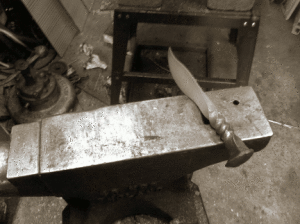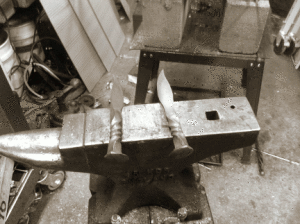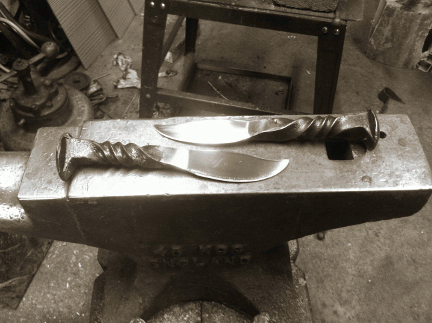Railroad Spikes. Why, oh why, are people so attracted to these things?
There is an ongoing discussion amongst the blacksmithing community about this. Many believe that it’s because they’re “recognizable”. You can readily see that the item is made from something else. I suppose reclaimed / repurposed / recycled stuff is all very popular these days. Etsy and Pinterest are full of these kinds of things.
Whatever the case, they (RR spikes) are popular – and so I’d better get used to the idea. One of the most requested items I’m asked for, are RR Spike knives. For a long time I resisted making them. Knife making just doesn’t interest me that much. And frankly, spikes aren’t the best steel for knives even if that were an area of interest.
However, I was asked by a fellow Willowbank student, and so I caved and agreed to make some.
And I have a confession to make. I enjoyed it. I actually enjoyed knife making, and didn’t mind working with the ubiquitous RR spikes.
The biggest challenge, was finding “legal” RR spikes. Some people collect loose ones they find laying along side of railroad tracks. *This practice is not legal*. The railroads generally frown upon people trespassing on their property, and take an even dimmer view of people collecting up their scrap iron.
Luckily for me, I’d already found a local supplier of new rail (see my post about my Crane Rail Anvil). That same supplier also carries fasteners, straight from the spike mill. And with a supply of brand new spikes at my disposal, I can jump on the band wagon and make some of these things.
In the end, I was quite happy with what was both my first knives, and my first RR spike project. I can certainly see doing more of these in the future – particularly now that I have a supplier, and went to the trouble of making new tongs to hold the things.



